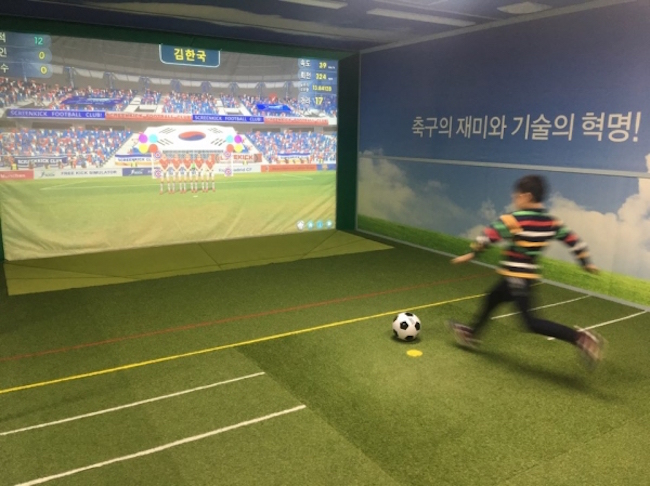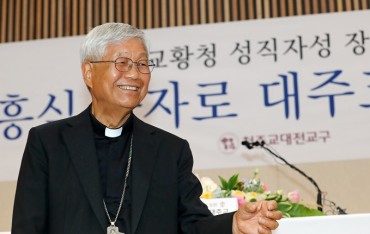
Two public special needs schools, Jeongjin School in Guro District, Seoul, and HyeEun School in Seongnam City, Yongin Province, have been selected as recipients of a government initiative to trial virtual reality-backed exercise facilities, the Seoul Metropolitan Office of Education stated on September 24. (Image: Ministry of Culture, Sports and Tourism)
SEOUL, Sept. 26 (Korea Bizwire) – Two public special needs schools, Jeongjin School in Guro District, Seoul, and HyeEun School in Seongnam City, Yongin Province, have been selected as recipients of a government initiative to trial virtual reality-backed exercise facilities, the Seoul Metropolitan Office of Education stated on September 24.
The initiative, a collaborative effort between the Ministry of Culture, Sports and Tourism and the Korea Sports Promotion Foundation, seeks to utilize the emerging technology of virtual reality as a platform for sports and exercise activities.
The prospective facilities will resemble screen golf in both appearance and general functionality. In a room with a giant screen on one side and a floor carpeted with green turf, students can kick and throw balls towards CGI-generated targets on the screen and see them move accordingly.
Special needs students are lacking in basic agility, reflexes and cognitive abilities, making participation in more typical outdoor activities difficult and unenjoyable.
The issue was highlighted in a January publication of The Korean Journal of Physical Education, in which a study titled “Analysis of Special Needs School Teachers’ Concerns about Physical Education” found that teachers’ greatest challenges lie in planning and implementing physical education classes, as well as preparing responses to unexpected situations.

The initiative, a collaborative effort between the Ministry of Culture, Sports and Tourism and the Korea Sports Promotion Foundation, seeks to utilize the emerging technology of virtual reality as a platform for sports and exercise activities. (Image: ETRI)
A separate study published in 2011 presented evidence that special needs students are in dire need of physical exercise. 41.2 percent of learning disabled students were recorded to have a BMI (body mass index) above 23, indicating obesity.
Not far behind were the visually impaired at 35.1 percent.
Their health problems were exacerbated by the fact that learning disabled students are oftentimes incapable of regulating their own diet.
Jeongjin School’s principal Kim Chun Ye pointed out that excessive weight gain also discourages students from pursuing physical activities.
Ever since the various health problems of special needs students came to light, a steady stream of research results has been published that suggest sports activities using cutting edge technologies like virtual reality can be a solution.
One sports facility will be about the size of a standard classroom. Costing approximately 70 million won, the expenses will be split between the central and local governments.
S.B.W. (sbw266@koreabizwire.com)






